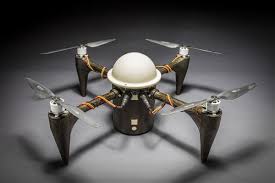
Breaking News
 $26M Frozen on Blockchain - With One Click
$26M Frozen on Blockchain - With One Click
 Italy are on national strike shutdown rejecting digital enslavement...
Italy are on national strike shutdown rejecting digital enslavement...
 The following U.S. states are currently using the rebranded "Reporty Homeland Security" so
The following U.S. states are currently using the rebranded "Reporty Homeland Security" so
 NATO Chief Urges Europe To Prepare For Long-Term World War With Russia, China, Iran & North Korea
NATO Chief Urges Europe To Prepare For Long-Term World War With Russia, China, Iran & North Korea
Top Tech News
 HUGE 32kWh LiFePO4 DIY Battery w/ 628Ah Cells! 90 Minute Build
HUGE 32kWh LiFePO4 DIY Battery w/ 628Ah Cells! 90 Minute Build
 What Has Bitcoin Become 17 Years After Satoshi Nakamoto Published The Whitepaper?
What Has Bitcoin Become 17 Years After Satoshi Nakamoto Published The Whitepaper?
 Japan just injected artificial blood into a human. No blood type needed. No refrigeration.
Japan just injected artificial blood into a human. No blood type needed. No refrigeration.
 The 6 Best LLM Tools To Run Models Locally
The 6 Best LLM Tools To Run Models Locally
 Testing My First Sodium-Ion Solar Battery
Testing My First Sodium-Ion Solar Battery
 A man once paralyzed from the waist down now stands on his own, not with machines or wires,...
A man once paralyzed from the waist down now stands on his own, not with machines or wires,...
 Review: Thumb-sized thermal camera turns your phone into a smart tool
Review: Thumb-sized thermal camera turns your phone into a smart tool
 Army To Bring Nuclear Microreactors To Its Bases By 2028
Army To Bring Nuclear Microreactors To Its Bases By 2028
 Nissan Says It's On Track For Solid-State Batteries That Double EV Range By 2028
Nissan Says It's On Track For Solid-State Batteries That Double EV Range By 2028
This 3D Printed Drone Can Wait Underwater And Launch From The Sea

Under the sea, it lay dreaming. The body, printed from machines, sealed carefully, still functioned. It survived one month under water, then two. The salt did nothing to stop it. It simply was, a waiting state of being. And then, with a flick of a switch and a sent command, it rose from the depths, soaking wet and then suddenly in the sky.
Meet CRACUNS, or the "Corrosion Resistant Aerial Covert Unmanned Nautical System." It's a submersible drone, made by the Johns Hopkins Applied Physics Laboratory, designed to straddle the littoral space between unmanned aircraft and unmanned underwater vessels. It is also made for the littoral, that part of the ocean between the beach and the high sea. Parts of it are 3D printed, to create a watertight body, and other parts are coated in commercial sealant, to keep the water out from the engines. According to Johns Hopkins, its "low cost makes it expendable", though given that the customer is the Pentagon, "low cost" isn't that revealing a metric.
In tests, it survived two months under water, and was still able to fly afterwards. While there's no payload specified, it's easy to imagine a swarm of CRACUNS waiting near a beach before Marines land on it, and then emerging to scout overhead. Or perhaps, armed with a more sinister payload (read: explosives), CRACUNS could become a semi-mobile minefield, put in place temporarily and then removed after the danger has passed.
There's a deep wealth of possibilities for a device like this. Watch the promotional video for it below, and see just how many Pentagonese buzzwords would can spot.:

 Carbon based computers that run on iron
Carbon based computers that run on iron

